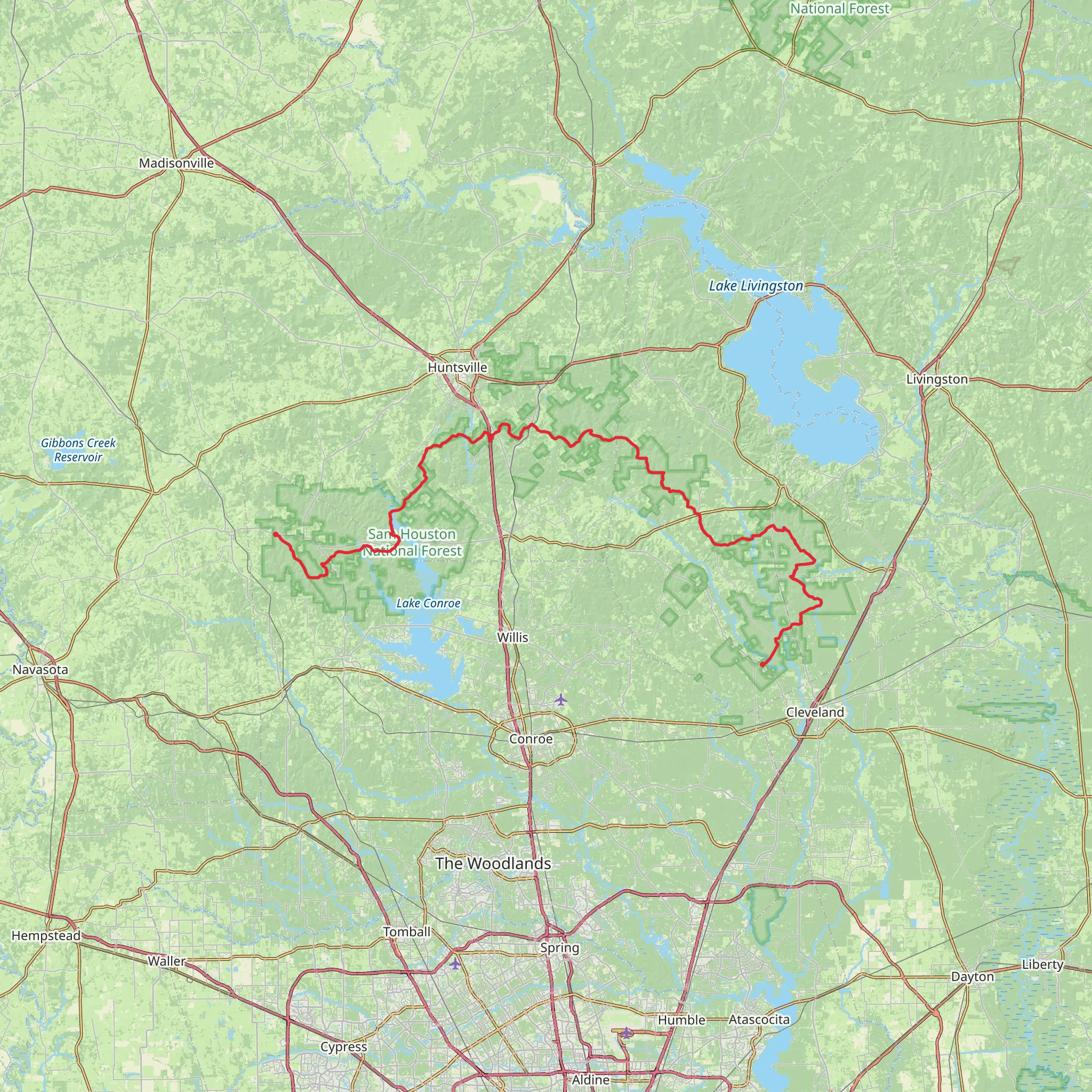Download
Preview
Add to list
More
152.1 km
~8 days
688 m
Multi-Day
“Embark on the Lone Star Trail for a historical trek through East Texas’ lush piney woods and scenic vistas.”
Spanning approximately 94 miles (152 kilometers) and with an elevation gain of around 1,968 feet (600 meters), the Lone Star Trail offers an immersive experience through the piney woods of East Texas. This point-to-point trail is nestled in the Sam Houston National Forest and begins near Richards, Texas, close to Montgomery County.Getting to the TrailheadTo reach the starting point of the Lone Star Trail, hikers can drive to the eastern terminus near the town of Richards. If you're coming from Houston, take I-45 North to Conroe, then follow TX-105 West to Montgomery, and finally head north on FM 149 which leads to the trailhead. For those relying on public transportation, options are limited, but you can take a bus to Conroe and arrange a taxi or rideshare to the trailhead.Navigating the TrailThe trail is well-marked with aluminum tree blazes and mile markers, but it's always wise to carry a reliable navigation tool. HiiKER is an excellent resource for downloading maps and ensuring you stay on the right path.What to Expect on the TrailAs you embark on your journey, you'll traverse through dense forests of loblolly and shortleaf pines, interspersed with hardwoods. The undergrowth is lush with palmettos and ferns, providing a green backdrop year-round. The trail crosses several creeks and streams, which can swell after heavy rains, so be prepared for potential water crossings.Wildlife and NatureThe Sam Houston National Forest is home to a diverse array of wildlife. Keep an eye out for white-tailed deer, armadillos, and numerous bird species, including the red-cockaded woodpecker. The forest is also a habitat for the endangered Houston toad. Remember to respect wildlife by observing from a distance and not feeding any animals you encounter.Historical SignificanceThe region holds historical importance, with the trail passing through areas that were once used by Native American tribes and early settlers. The Lone Star Trail also winds near the site of the historic town of Montgomery, considered by some to be the birthplace of the Texas Lone Star flag.Landmarks and Points of InterestAbout 40 miles (64 kilometers) into the hike, you'll reach the scenic Lake Conroe, a popular spot for fishing and boating. Further along, the Big Creek Scenic Area offers stunning views and a chance to rest by the gently flowing waters.Trail Conditions and DifficultyThe trail is rated as medium difficulty, primarily due to its length rather than steep climbs. Most of the elevation gain is gradual, but there are a few short, steep sections. The trail can be muddy and slippery after rain, so waterproof boots are recommended. During the summer months, the heat and humidity can be intense, so plan accordingly with plenty of water and sun protection.Preparation and SafetyBefore setting out, ensure you have enough food and water for the duration of your hike, as there are limited resupply points along the trail. It's also advisable to inform someone of your hiking plans and expected return time. Check the weather forecast and trail conditions, and be prepared for the changing weather that can occur in East Texas.By following these guidelines and being prepared, hikers can enjoy the natural beauty and historical richness that the Lone Star Trail has to offer.
What to expect?
Activity types
Comments and Reviews
User comments, reviews and discussions about the Lone Star Trail, Texas.
4.44
average rating out of 5
18 rating(s)

